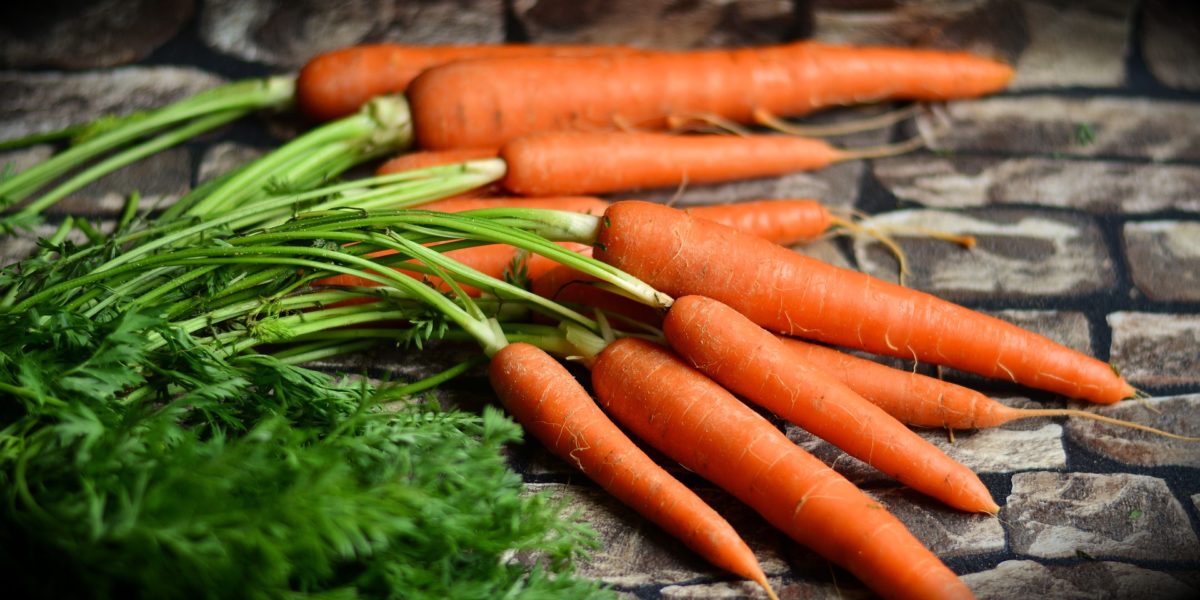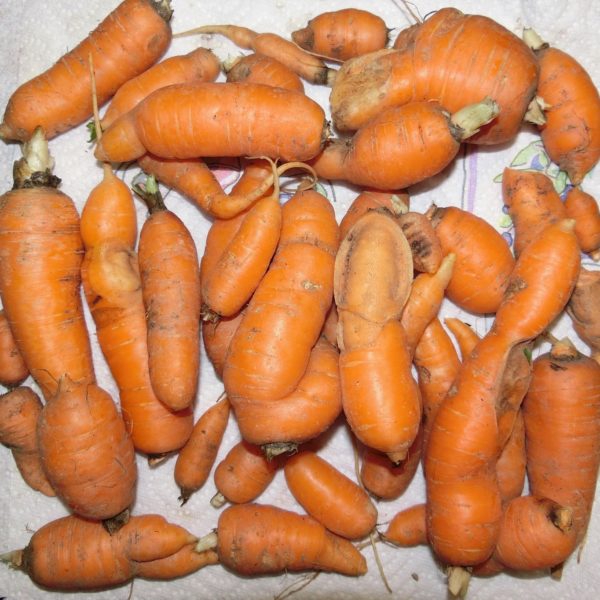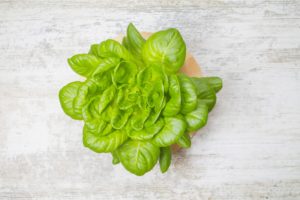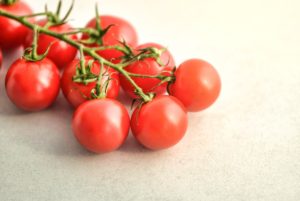You really cannot beat growing your own food. There’s no shortage of things you can grow in hydroponics. If you want to grow hydroponic carrots, you’re in the right place. Carrots, like any other root vegetable, do have certain needs you have to take care of. Even so, they make an ideal hydroponic plant if you know what to do.
Hydroponic Carrots: The Basics
Before you start those seeds, take a look at the basics of growing hydroponic carrots:
- Ideal pH: between 6.0-6.5
- EC range: 1.6-2.0 (1150-1350 ppm)
- 12 to 16 hours of light daily
- Temperature: 60 to 70 degrees Fahrenheit (15.5-21 C)
- Medium based system required
- Best in wick, drip, ebb, and flow systems
- Need proper spacing, thin out seedings
- 4 main varieties
- 2-3 months to harvest

Recommended Equipment
Starting Your Carrots
Some veggies are easy to propagate from clones. Unfortunately, these simply are not one of those, nor are most root crops. Likewise, it’s not a good idea to transplant a carrot from soil into your hydroponic system. Because they’re a root crop, even more of the plant is in soil, which increases the risk of bringing pests and pathogens into your system.
In short, the best way to start is with carrot seeds.
You can use a seed start mix or mix perlite and vermiculite to germinate the seeds. Make sure to moisten the growing medium, and place seeds about half an inch beneath the surface. Plant more carrot seeds than you intend to grow. Carrots are a vegetable that needs to be thinned out after sprouting. Seeds germinate best around 65 degrees (18C), although some can be germinated at up to 85 degrees (29C).
Within 6 to 10 days, your seeds should germinate. Wait until carrots are 2” tall (5cm) or have ½’ wide ( 1.2cm) tops to thin them out. Once they’re ready, choose the strongest looking plants to keep. Once you’re done, there should be at least 3 inches (7.5cm) of space between each. When you thin your sprouts, pull directly upward to ensure you pull the foliage and roots out.
Don’t worry if it seems like you’re thinning out a lot of your seedlings. You may ultimately end up getting rid of up to a third of them.
Keep in mind that while there are well over a hundred different carrot varieties, there are four main types. Each does well in a hydroponic system, provided you have enough space. It can be helpful to look at their mature size if you’re working with limited space. In particular, the depth of your system determines what your limitations are.

Main Varieties
While carrots come in over a hundred different varieties, they’re classified as four main types. The types are based primarily on how large they grow, and what shape they grow in.
Nantes
Nantes carrots are beloved in Europe. This variety has a rounder, almost cylindrical form, and grows to around 25 cm long.
Imperator
Imperator is the most popular variety in North America. They grow longer than many other types, often reaching 30 cm with a tapered, slender shape. They’re usually sold fresh, with some of the green tops remaining.
Danvers
Danvers varieties grow to just under 25 cm, although they are thicker than other varieties, and have a pointed tip. While they aren’t sold fresh as often, they are popular for frozen foods, and used in storage.
Chantenay
Chantenay carrots have a typical pointy shape with a thicker body. This variety usually grows to about 25 cm in length.
Transplant and Care
Give your carrots at least a couple of days after you thin them, and then transplant them. Because carrots are a root vegetable, you have to use a media based hydroponics system. There are a couple reasons for this. First, you need growing medium to support them. Next, water culture only systems can cause the veggies to rot. They just don’t do well when you keep them soaked in water.
With that in mind, the top three systems to grow hydroponic carrots are wick, drip, or ebb and flow.
All three use growing medium and have an equal balance of moisture and aeration. While an ebb and flow system does periodically flood with water, it also drains. Because the water drains and the medium has time to ‘air out’, your crops get plenty of oxygen too. With wick and drip hydroponics setups, nutrient solution goes into the medium gradually, allowing plenty of time for absorption.
As we mentioned, keep the depth of your hydroponic system (meaning your grow tray especially), in mind. Make sure you have a tray at least a foot deep (30cm) to allow proper growth.
The tried and true medium of choice is a perlite and vermiculite mix. Some growers use a 50/50 mix in their hydroponics setups. However, many people agree that it’s best to make a mix of about 2/3 perlite with 1/3 vermiculite. Perlite keeps the plants supported and allows plenty of oxygen through. The reason people mix vermiculite with perlite is to balance out moisture (how much nutrient solution is absorbed).
Learn more about growing medium
As your plants get older, you can get them regular nutrient solution. First, start them with a weaker solution and add more as they start maturing. Before you add nutrients, always check your EC. The EC shows how concentrated the nutrient solution is. Your target range should be between 1.6 and 2.0, while your pH should be between 6.0 and 6.5.
It’s worth mentioning that you can find a nutrient solution targeted for root vegetables, and that’s best to use.
Carrots do best with around 12 to 16 hours of light daily, and 8 to 12 hours of darkness. Some varieties can still grow with as little as 6 hours of light, but it’s best to give them at least 12. LED and HID grow lights are ideal after transplanting. But seedlings do fine with less intense fluorescent grow lights.
Why carrots need a deep grow tray
There are plenty of other plants that you can simply prune to keep them small and manageable. Carrots are not one of them. Now, baby gourmet varieties are a different story entirely, and they are never grown to the size of a regular, mature carrot.
In general though, the deeper the tray the better. If you don’t give them enough space to grow downward, carrots end up deformed. They can start growing sideways as they hit the bottom of the tray.
While you might not mind ugly veggies, it becomes a problem when those sideways carrots start hurting the roots of their neighbors. The other big issue that can happen is when the carrot actually splits at the bottom.

Time to Harvest
Carrots are not the fastest growing vegetables, but they do reach harvest size faster in a hydroponic system. How long does it take? It really depends on the variety of carrot you choose, but most are ready in 2 or 3 months. If you’ve decided on a gourmet baby variety, you’ll harvest earlier to keep them small.
How can you tell when carrots are ready to harvest? Yes, they are covered in growing medium. Still, it’s not as hard to see when they are ready as you might think.
The leafy stalks up top should be nice and full. The root is pretty easy to find (directly underneath the leafy stalk, of course). While there should be plenty of depth in your system, you should be able to move some growing medium to expose the top of it. Most varieties are ready when they are about an inch, or 2.5cm, in diameter (from the upper part that is visible).
Problems to Watch For
Like any other veggie, there are things you should watch for to avoid problems. Unfortunately, since we grow carrots to eat the root part and there’s not a lot of visible foliage, it can be hard to see a problem. Still, you should be keeping an eye on the visible parts to look for any health problems.
Outdoors, pests are one of the biggest problems. Since you’re growing carrots indoors, you won’t have to worry about that as much. A huge advantage of using hydroponics is that you avoid soil based issues.
One of your biggest problems to watch for is rotting. This happens when carrots are in too much moisture, for too long. That’s one of the main reasons you wouldn’t use something like a DWC (Deep Water Culture) system to grow hydroponic carrots.
The other problem you might encounter is deformed carrots. As we mentioned earlier, this is mostly a problem due to either: not enough space between plants, or a shallow tray. If the roots end up splitting, the plants will be more vulnerable to diseases since they’re already weakened.
Keep plenty of airflow by using a medium that drains water well and holds just enough moisture. Getting enough oxygen to the root zone is paramount to avoiding fungi and bacteria.

Frequently Asked Questions
Can I grow hydroponic carrots with the Kratky method?
The Kratky method is really best left to other plants, especially leafy greens. It’s most similar to a Deep Water Culture hydroponics system, and roots are submerged beneath the water (nutrient solution) constantly. While it may be possible, it’s not a good idea. Carrots are susceptible to rot with too much moisture, and the Kratky method provides plenty of that.
Can you eat carrots that are forked or sideways?
As long as it hasn’t developed rot or fungus, it should be fine. The main reasons you want to avoid forked, sideways growing carrots is first for the health of your other plants, and second, overall appearance. If you have a hydroponic garden as a hobby, the appearance may not bother you. Commercial greenhouses would simply have trouble marketing ugly veggies.



